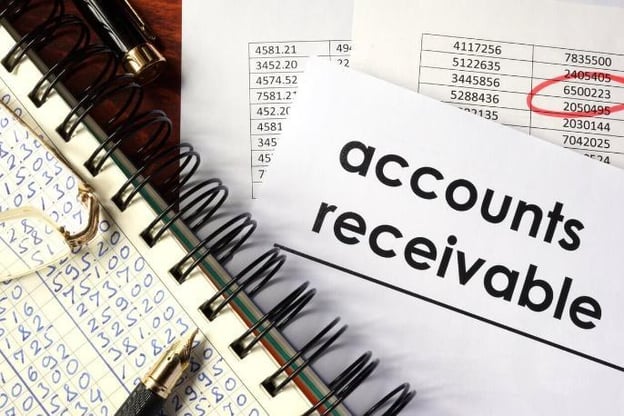What is Accounts Receivable Forecasting & How to Do it Right?
Understanding accounts receivable forecasting might sound complicated and confusing, but it’s really all about figuring out when your business will get paid.
This helps you manage your cash flow better and do better budgeting.
In this blog, we’ll break down what accounts receivable forecasting is and give you some simple tips on how to do it right.

Why Is Account Receivable Forecasting Important?
Accurate and reliable forecasting can really help a company manage its cash flow.
By organizing its short-term receivables collection, the company can rely less on outside financial management companies.
This means accounts receivable forecasting makes the company quicker and better at handling money, boosting its financial growth.
Why Does Forecasting Accounts Receivables Sound So Complicated?

The difficulties faced by a head office team that manages the forecasting process are unthinkable because of the volume of data and the parties that are involved in it. Forecasting accounts receivables becomes complicated for huge companies because of the volume of data.
It is simpler to divide receivables forecasting into short-term and long-term forecasting. Long-term forecasting is easier since customers will eventually pay their bills. However, there is variation in the time that bills are paid and when cash arrives. Therefore, customers may need help paying due to holding cash because of the disruptions in the supply chain.
Why Does Forecasting Accounts Receivables Sound So Complicated?

Forecasting accounts receivables becomes complicated for huge companies because of the volume of data and the number of parties involved.
Therefore, it is always better to divide receivables forecasting into short-term and long-term.
Long-term forecasting is easier as customers will eventually pay their bills. However, sometimes there is variation in the time the bills are paid and when cash arrives.
What Is The Right Way To Do Accounts Receivable Forecasting?

Since account receivable forecasting is a forward-looking activity, there's no magic trick to solve all the problems.
But based on ZarMoney's experience helping big companies set up and manage their forecasting systems, here are some basic steps that can really improve the accuracy and quality of your accounts receivable forecasts:
Step 1: Historical Data Analysis
Learning about the past behaviour of accounts receivable is the first step to predicting future customer payments better. Unfortunately, there is no easy way to conduct the analysis, but eventually, you will learn how you can do account receivable forecasting.
At the very basic level, an analysis of the historical data accounts receivable information should include the following:
- Identifying customers who often don’t pay in full.
- Looking at your biggest customers and their payment habits.
- Noting the most volatile parts of your receivables ledger, like specific products, services, or customers.
- Considering seasonal trends in payments.
The goal is to figure out which areas of your receivables ledger cause the most problems and are hardest to predict. This helps your company focus on those trouble spots. Also, using the 80:20 rule (where 80% of problems come from 20% of sources) can make this process more efficient.
Step 2: Divide The Accounts Receivables Into Subcategories
The analysis of the past makes it easy to break down the ledger of accounts receivables into different reporting subcategories based on what should be re-focused and what should be improved.
A typical sub-categorization is based on the size of the client. Examining accounts receivables as a singular number is difficult as they include multiple moving components, even in large companies.
However, a simple split of 80:20 can quickly narrow the focus on the most important customers and their payment habits.
Other ways to group customers could be by:
- Terms of payment
- The time of the week or month that payment is expected (e.g., the week that ends in the month)
- Credit quality/score
This kind of grouping is important for regularly checking and understanding how accounts receivable are working.
Step 3: Observe And Make Adjustments To Assumptions
Predicting and analyzing accounts receivable is an ongoing task. The steps you've read above are the basics for continuous analysis, leading to updates in assumptions for forecasting or steps to increase cash flow collection.
Variance analysis is important for improving accounts receivable forecasting. It compares the forecasted numbers with the actual results, showing how well the assumptions worked and what needs to be adjusted for better forecasts.
Why You Must Use Tools For Forecasting
Just like most of the cash flow forecasting, you can predict accounts receivables manually using spreadsheets. This involves gathering all the necessary data and entering it into your model.
With ZarMoney's specialized forecasting tool, you can automate data collection from all sources, giving you the most accurate results. Plus, our tool uses predictive analytics to give you deep insights into what could impact the accuracy of your forecasts.
Conclusion
Account receivable forecasting is an important part of every business.
We are sure this blog will help you better understand what it is and how to do it right.
If you are new and are looking for account receivable forecasting services, feel free to contact our ZarMoney team for further assistance.
1. How do you forecast accrued compensation on the balance sheet?
First, figure out your final payday based on your payroll. This usually happens about a week before the money is taken out. Payroll expenses will be recorded for this period. Next, count the days since your last payday up to the end of the month to see how many days you need to account for.
2. How do you define accounts receivable?
Accounts receivable is an asset accounting and not a revenue account. In accrual accounting, it is possible to record revenues at the same time that you are recording an account receivable.
3. What is account receivable credit?
The term Accounts Receivable (AR) is the money a business will receive from its clients who have purchased their goods and services through credit. The credit period typically is very short and can range from just a few days or months or, in certain cases, even a whole year.
4. Are accounts receivable an asset or revenue?
Accounts receivable are an asset. They represent money that customers owe to a company for goods or services provided. The company expects to get paid soon, so until the money is received, it counts as an asset, not revenue.

.png?width=6912&height=3456&name=Alternative%20ZarMoney%20banner%20(5).png)
